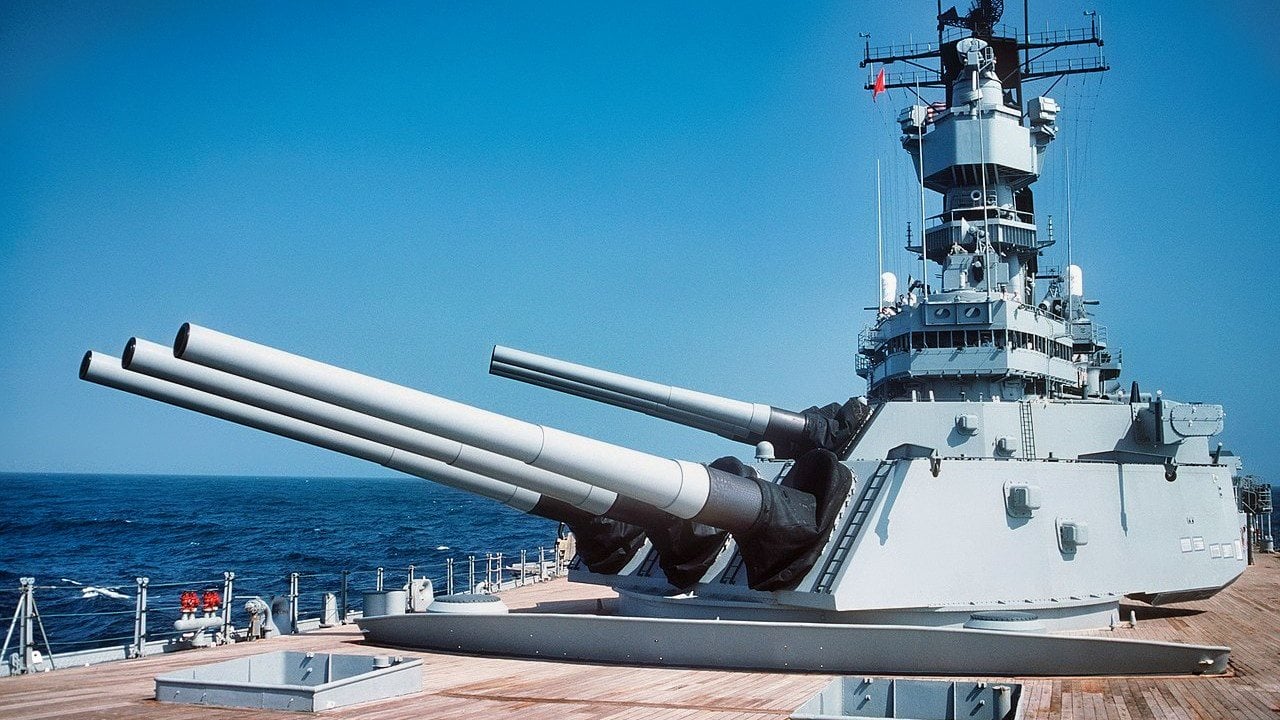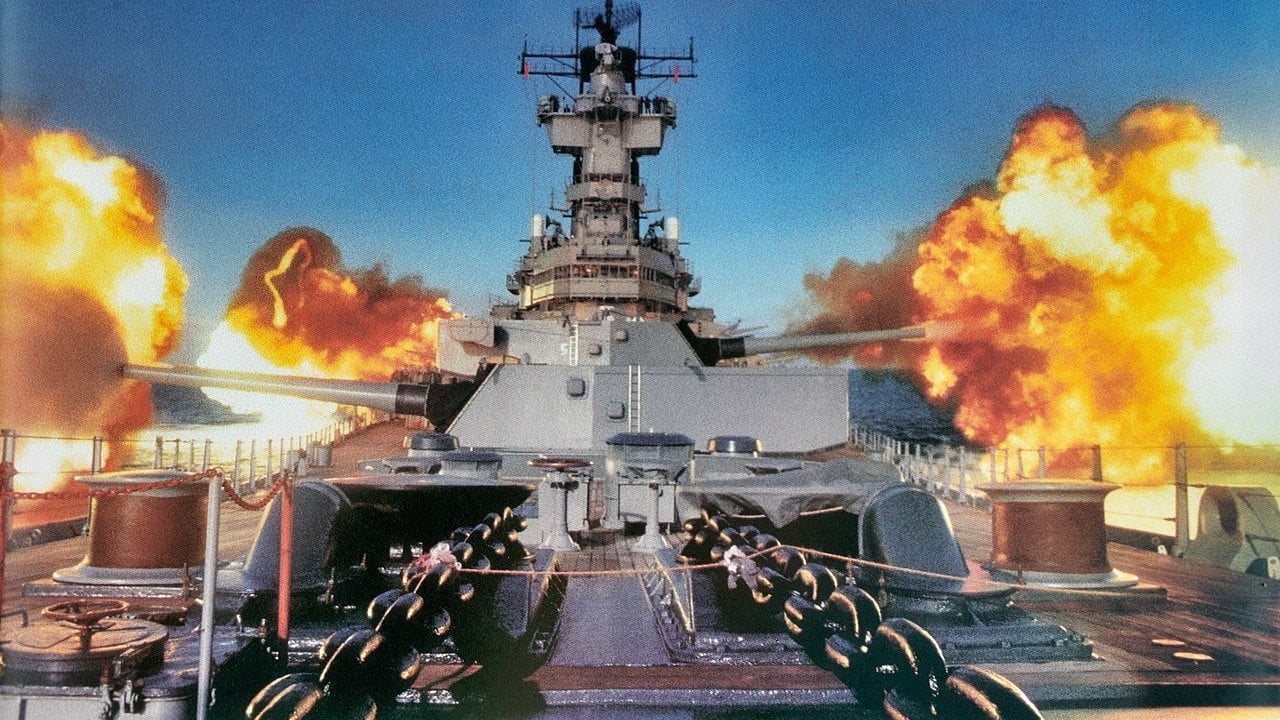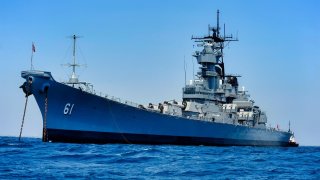Iowa-Class: Navy Battleships That Could Have Fired Nuclear Artillery 'Shells'
During the Korean War, the U.S. Navy outfitted Iowa-class battleships with nuclear capabilities through Operation Katie, enabling them to fire Mark 23 "Katie" nuclear shells.
Summary and Key Points: During the Korean War, the U.S. Navy outfitted Iowa-class battleships with nuclear capabilities through Operation Katie, enabling them to fire Mark 23 "Katie" nuclear shells.

-The USS Iowa, USS New Jersey, and USS Wisconsin were equipped to carry these 15-20 kiloton nuclear projectiles, similar in power to the bombs dropped on Hiroshima and Nagasaki.
-This classified program, which began in 1952, aimed to provide the Navy with unparalleled firepower capable of destroying entire cities or Soviet battle groups. Although the Katie shells were never used in combat, their presence highlighted the extent of nuclear armament strategies during the Cold War.
Could the U.S. Navy's best battleship, the Iowa-class, actually fire nuclear-tipped shells?
With the Korean War in full swing in the early 1950s, the U.S. Navy had its own wants and needs, plus rivalries with other service branches. The Army, Air Force, and submarines with the Navy were armed with nuclear weapons, but no surface ships could fire atomic devices. One plan was to outfit three of the Iowa-class battleships so they could launch a nuclear shell from the vessels’ main 16-inch guns.
“Katie Bar the Door”
Operation Katie was the name of the program. The moniker came from the abbreviation for kilotons (kt). The idea was to take Army tactical nuclear shells and retrofit them for battleship use.
These were called Mark 23 "Katie" nuclear projectiles and fifty were produced beginning in 1952 and the first arrived in 1956.
The Iowa-class Battleship Would Deliver the Nuclear Round
The navy outfitted the USS Iowa, USS New Jersey, and USS Wisconsin with altered magazines on the ships to carry the shells. Each ship would have ten Katie projectiles and nine practice shells.
This would give the navy the biggest and most powerful nuclear artillery in the world – a total of 135–180 kilotons of yield.

Each Katie Nuclear Shell Would Have Ample Power
The Mark 23 was derived from the Army’s Mark 9 – the first nuclear artillery shell. The Navy’s Mark 23 had a 15-20 kiloton nuclear warhead – about the size of the bombs dropped on Hiroshima and Nagasaki to end World War Two.
So, the Katie would be able to take out a city day or night and in all weather. In a naval battle, it could destroy an entire Soviet battle group. The navy’s nuclear shell was thought to be accurate.
It Took Some Clever Engineering
These shells required careful engineering. “Naval Gazing,” a blog dedicated to the USS Iowa and other battleships, had this to say about nuclear devices fired from artillery.
“An artillery shell is an incredibly difficult environment to put a complicated device like a nuclear warhead. It must withstand normal handling, thousands of Gs of acceleration as it’s fired, and the centrifuge of a shell spinning at 10,000 rpm or more.”
Navy Kept It Classified
It was no surprise that the navy wanted to keep this under wraps, and they never confirmed or denied the presence of nuclear shells on the vessels.
Could the Katie Have Been Used to “Win” a Nuclear War?
But it is plausible that the shells were employed on the battleships. In those days nuclear planners believed the United States could “win” a nuclear war with the Soviets. The Katie shells showed just how far the military was willing to go with nuclear weapons. The nuclear option that would escalate from a conventional war was a real prospect.
The Military Was In the Nuclear Age
Fred Kaplan, writing in his book The Bomb: Presidents, Generals, and the Secret History of Nuclear War summarized the military’s thinking during the era.
“All of these options envision the bomb as a weapon of war, writ large. This vision has been enshrined in the American military’s doctrines, drills, and exercises from the onset of the nuclear era through all its phases.”

Thus, the Katie was part of a larger military strategy. By 1962, the Katie shells were removed and thankfully never used, although the USS Wisconsin may have fired a practice round in 1957. The body of a Mark 23 shell is on display today at a nuclear museum in Albuquerque, New Mexico.
About the Author
Brent M. Eastwood, Ph.D., is the author of Humans, Machines, and Data: Future Trends in Warfare. He is an Emerging Threats expert and former U.S. Army Infantry officer. You can follow him on Twitter @BMEastwood.
Image Credit: All Images are Creative Commons.


